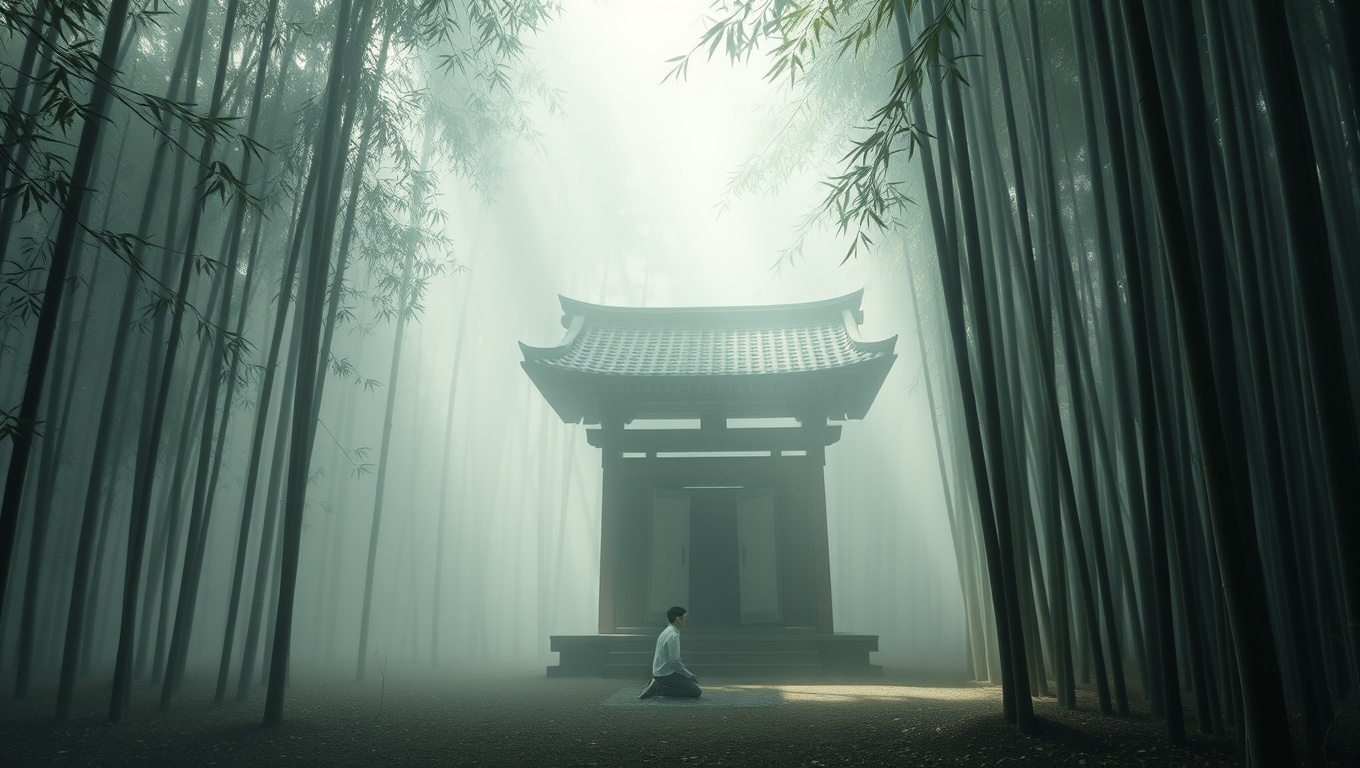

Shrine of Woven Fates
Mend the threads of destiny at the loom of the spider kami.
An old, quiet shrine in a misty bamboo forest, where worshippers pray not for fortune, but for clarity on their path and connections with others.
History of the Shrine
This shrine was founded by a reclusive Heian-period noblewoman who had lost a cherished friendship due to a misunderstanding. In her grief, she retreated to a dense bamboo forest. There, she observed a garden spider painstakingly repairing its web after a storm. She became fascinated, seeing the intricate web as a metaphor for the complex and fragile web of human relationships. She came to believe that a divine, spider-like intelligence was responsible for weaving all the 'en'—the threads of causality and connection—in the world.
She established a small, humble shrine dedicated to this spider kami, Musubi-no-Gumo. It never sought wealth or fame. Instead, it became a quiet destination for those with troubled hearts. People came not to pray for luck or riches, but to ask for help in mending frayed relationships, finding forgiveness, or understanding their place in the grand tapestry of life. The shrine's priests are not oracles; they are 'listeners' who help visitors articulate their own tangled feelings before making an offering.
The Enshrined Kami
Musubi-no-Gumo is a mysterious and subtle kami of fate ('en') and relationships ('musubi'). Unlike most kami, it does not offer dramatic blessings or worldly goods. Its gift is clarity. It is believed to work on the invisible threads that connect all beings, gently untangling knots caused by anger and misunderstanding, reinforcing threads weakened by distance or time, and sometimes, severing threads that are causing harm.
The spider kami represents the patient, intricate, and often unseen work that goes into maintaining relationships and finding one's purpose. It is a deity for those seeking harmony over fortune, understanding over success. Worshippers come here not to ask for a new fate, but for the wisdom and courage to better navigate the one they are already weaving.
What to See
The shrine is purposefully understated. The buildings are made of unvarnished wood that has weathered to a silvery grey, blending in with the surrounding bamboo. There are no grand statues. The central point of worship is the 'Ayatori-no-Ma' (The Cat's Cradle Hall). Inside, a massive, intricate web, woven from countless multi-colored threads left by worshippers, shimmers in the filtered light. It is constantly being added to, a living sculpture of a million prayers for connection.
Visitors do not throw coins. Instead, they choose a single, colorful thread that represents their wish—red for romantic love, gold for friendship, white for family peace, indigo for self-understanding. They then tie this thread carefully onto the great web, a silent offering and a request for the spider kami to gently pull on their thread of fate and help untangle it.
Major Festivals
The shrine holds only one festival, the 'Ito-taguri Matsuri' (Thread-Pulling Festival), on the night of the full moon in autumn. The great web is carefully taken down and a single, new, pure white silk thread is strung up in its place. The old web, heavy with the wishes of the past year, is then ceremonially burned. The smoke rising through the bamboo forest is believed to carry the essence of those resolved wishes up to the heavens. It is a festival of release and renewal, of letting go of old tangles to make way for new connections.
Support Shrine of Woven Fates
Your participation helps preserve this sacred site for future generations. Every digital offering contributes to real shrine preservation efforts across Japan.
By making an offering, you become part of a global community honoring Japanese spiritual traditions and supporting the cultural heritage that has been cherished for centuries.